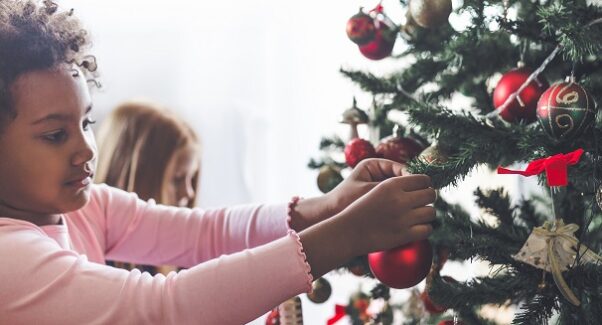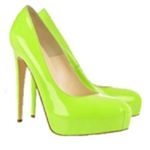Keep Children Safe During the Holidays
From family get-togethers to shopping, the hustle and bustle of the holidays can keep you busy. But wintry weather, holiday parties and festive decorations can pose a risk for children.
“There are a number of different injuries that we see increase this time of year,” Dr. Jenny Ziembicki of UPMC in Pittsburgh says. “As the weather gets colder, we see injuries from alternative heating sources such as open fires and area heaters. We see a significant increase in cooking-related injuries, particularly around the holidays. Lastly, we see a number of different injuries that occur from the decorations themselves.”
An injury or hospital visit can bring an abrupt end to your family’s seasonal fun. Keep your children safe during the holidays with these tips.
Practice kitchen safety
The holidays often mean more time in the kitchen whipping up classic family meals. More time in the kitchen may mean an increased risk of cuts and burns, especially with children involved.
“Take a minute to be aware of your surroundings and make sure you set up safety zones,” says Dr. Ziembicki. “Around an open fire or in the kitchen when we’re cooking, we really want to keep a three-foot perimeter.”
If your children are eager to help prepare your holiday meal, be sure to follow these kitchen safety tips:
- Have children wash up before handling food. Remember that even little hands can carry big germs. To encourage good hand hygiene, lead by example and wash your hands with soap and water before preparing your holiday meal. Make sure you scrub for 20 seconds.
- Keep a careful eye around hot items. Many children like to touch and taste anything they can get their hands on. Be sure to handle hot items with a potholder or towel and keep children a safe distance away.
- Practice knife safety. Lots of chopping, slicing and dicing go into most holiday feasts. If your children are younger than teenagers, they shouldn’t be handling knives. Be sure to teach your teens the proper way to use a knife.
- Clean as you cook. Encourage your helpers to wipe up messes as they make them. Keep surfaces washed and clean. A tidy kitchen can reduce the risk of slips and falls.
- Choose age-appropriate tasks. If your child cannot safely handle knives, they can still be a part of holiday fun in the kitchen. Try including them in tasks better suited for their age. Perhaps they can stir batter with a spoon, sprinkle flour on the counter for festive cookies or taste-test ingredients.
- Handle food safely, so no one tosses their cookies. After you have enjoyed your holiday meal, store leftovers in the fridge immediately. While you are preparing foods, be sure to keep raw meats separate and cook them to a safe temperature.
Avoid the seasonal flu, common cold and COVID-19
Avoid sneezes, sniffles and stuffy, red noses during the winter, when the common cold and seasonal flu are more widespread.
The best way to avoid catching the flu is by getting your flu shot. Before celebrating the holidays, make sure your children are up to date on their flu vaccine. If you are hosting a family get-together, take steps to slow the spread of illness at the event. If one of your loved ones feels ill, ask them to stay home.
Children aged 6 months and older are now eligible for the COVID-19 vaccine. The best way to lower your child’s risk of getting COVID-19 is to get them vaccinated.
During the holidays, your child may be on break from school. If they are attending classes, the Centers for Disease Control and Prevention (CDC) recommends that they wear a mask indoors.
To avoid getting sick during the holidays, remind your children of some basic healthy habits:
- Wash your hands regularly with soap and water for at least 20 seconds.
- Don’t touch your face.
- Cover any coughs or sneezes.
Dress your child appropriately for cold weather
Baby, it is cold outside! On the chilliest days of the winter season, children can get frostbite in minutes. Children are more susceptible to cold, so it is important to keep them bundled up during the winter months.
When temperatures are bitterly cold, it is best to keep babies and toddlers indoors as much as possible. If you are venturing outside in cold weather with children, layering is key. Pockets of air between the layers of clothing trap heat to keep your child warm.
Follow these layering tips:
Supervise and encourage the Use of safety gear during outdoor activities
Sledding, ice skating and snowball fights are classic holiday fun for children. But don’t let the fluffy snow fool you; these activities can be dangerous.
There is no need to put a stop to your child’s winter romp — but it is important to enjoy the season safely.
Children should wear proper safety equipment while sledding, skiing, snowboarding, ice skating or enjoying other outdoor winter activities. Be sure to keep a watchful eye as your child participates so you can step in if there is an accident.
Child-proof your holiday decorations
Are you turning your house into a winter wonderland? Don’t go overboard with the holiday spirit — seasonal decorations can be dangerous for children.
Falling objects can seriously injure children. Secure large decorations to the wall so they won’t tip over. Keep choking hazards, like small decorations, out of your child’s reach. A child can swallow small trinkets or objects, which can block their windpipe.
Many families decorate their homes with mistletoe and poinsettias during the holiday season. Be sure to keep them away from children and from your furry friends — these classic winter plants are toxic when eaten.
Keep toy safety in mind
Children’s toys are a staple for the holiday season. But think carefully about what you put under your tree. Some toys may not be as innocent as you think.
The Consumer Product Safety Commission reported over 224,200 toy-related child injuries in 2019. It is essential to consider the potential dangers of a toy before purchasing it for your child.
Choose toys based on the child’s age and developmental level. Be mindful of the item’s size — your child could choke on small pieces, batteries and attachments. If you plan on surprising your child with a riding toy, like a bike, tricycle or scooter, be sure to add appropriate safety accessories (like a helmet) as a part of the gift.





